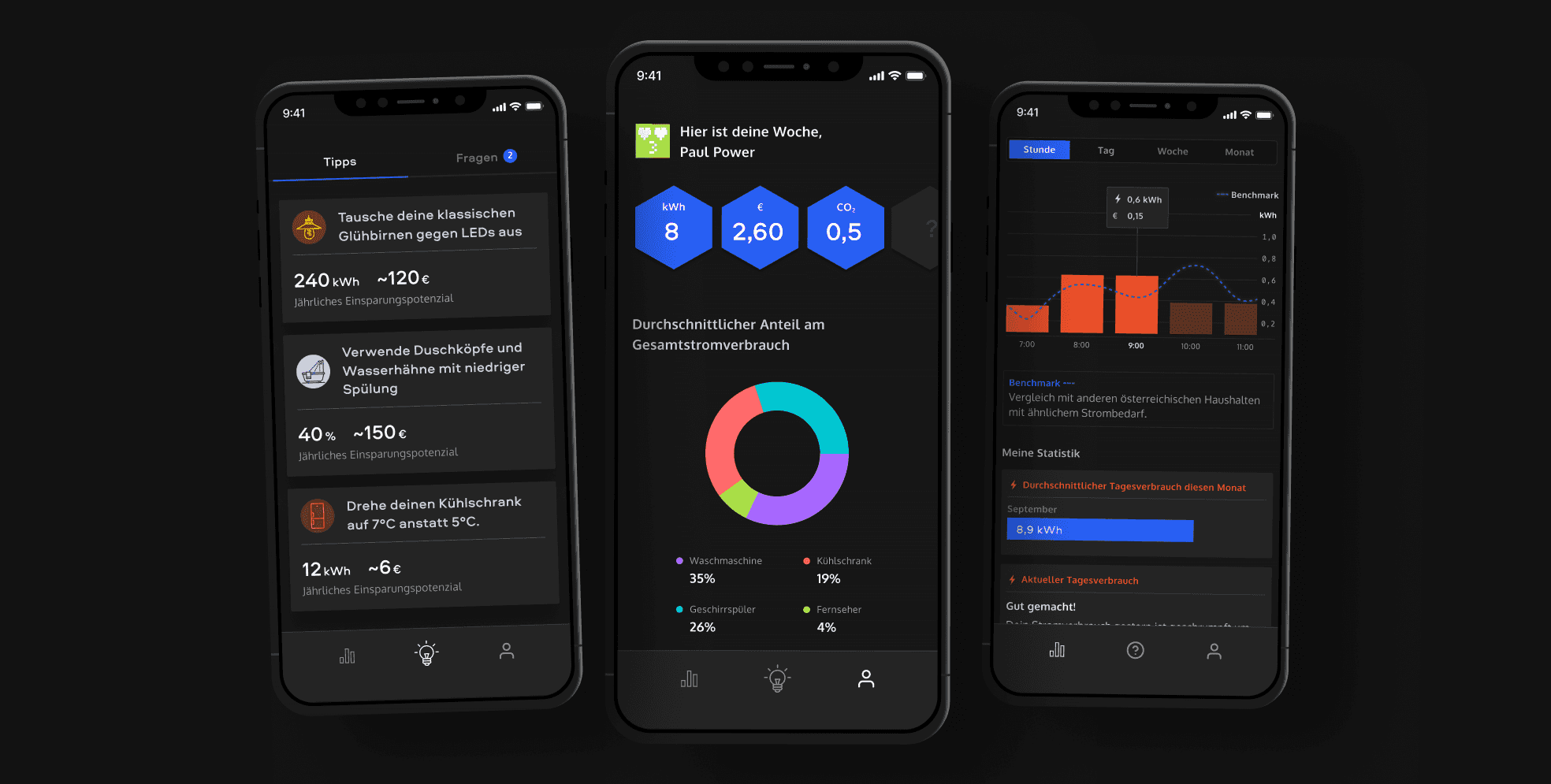Saving energy costs in households
Energy Coach
In 2022, the energy costs in Europe have risen significantly, exacerbating the costs of living crisis. People were looking into saving energy costs, looking for tips and tricks on saving energy. To provide household with better energy saving advice, we came up with Energy Coach. Analysing real household energy consumption data, we can provide users with personalised energy savings tips while bringing transparency to their energy consumption.

Project Details
Project Type
Mobile App, Concept
Role
Research & Concept, UI/UX Design
Date
2022-08-01
Company
nista.io
Problem Statement
When we at nista looked closer at energy saving tips and tricks in the media, they were often saving much less energy than promised. One of the most wide spread advice was to use lids on pots when cooking. Out of curiosity, we decided to calculate how much energy and costs is saved when using a lid. According to our calculations, 0.014 kWh can be saved, which translated to 0.6 euro cents at the time. That would mean saving 6 euros when bringing water to boil in a pot thousand times. So how can household save energy in a way that makes a difference?
Energy consumption is highly personal and differs from household to household. Some of the obvious variables are the square meter footage of the household and number of people living in it. Energy consumption also differs based on income. While higher income households can afford more efficient electronics than lower income families, they also tend to have more gadgets in their homes and have more discretionary energy use.
Giving people more information about their day to day electricity consumption and making the consumption data transparent can help save energy costs. For example: households with prepayment meters around the world report high levels of satisfaction due to the increased feedback their meters are providing them with, resulting in better control of energy use. This is important for low income families, for who a prepayment meter provides a better control over their budget.
Sketches
Solution
Smart meters track energy usage, can also provide real-time usage information and send feedback. EU directives have been setting the policy agenda for smart metering rollouts for more than a decade. Smart metering is being introduced as one of the core elements of competitiveness and environmental sustainability of energy markets. This means that smart meters are becoming a standard in the EU and are here to stay.
With a smart meter, energy consumption data can be accessed by consumers. Furthermore, this data can be analysed. To provide people with personalised tips on energy saving and energy consumption insights, we have designed Energy coach. By connecting their smart meters to energy coach, users can see their energy consumption. To identify high energy consuming appliances, Energy coach asks users personalised questions based on users’ energy consumption data. The more questions users answer, the better the analysis. Energy coach provides people with personalised tips and incentives for energy saving and makes energy consumption data transparent.
This project was a concept I have created at nista. Even though it has not been developed, the research and concept of Energy Coach helped us to further develop nista’s core product, which focuses on reducing energy costs of industries.



